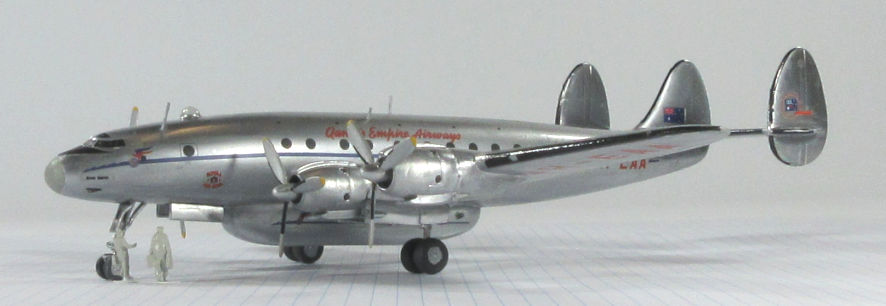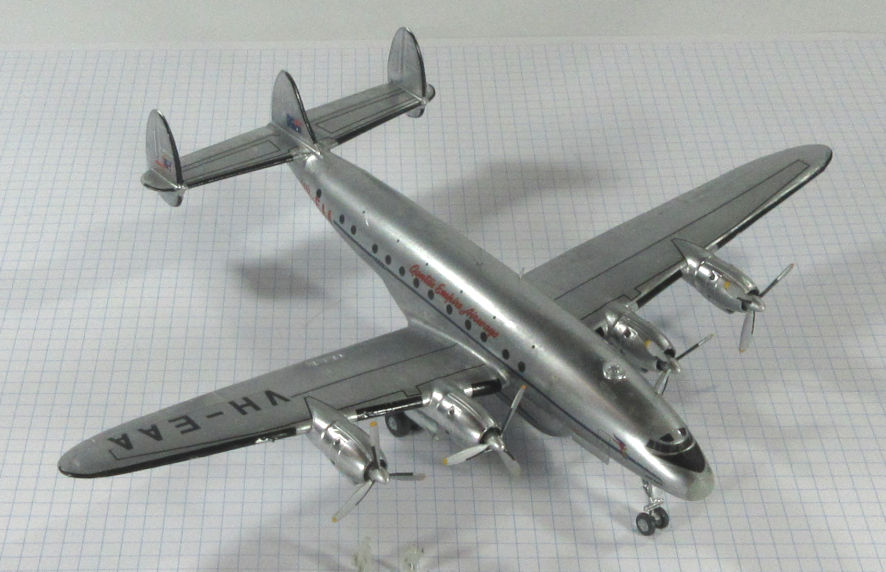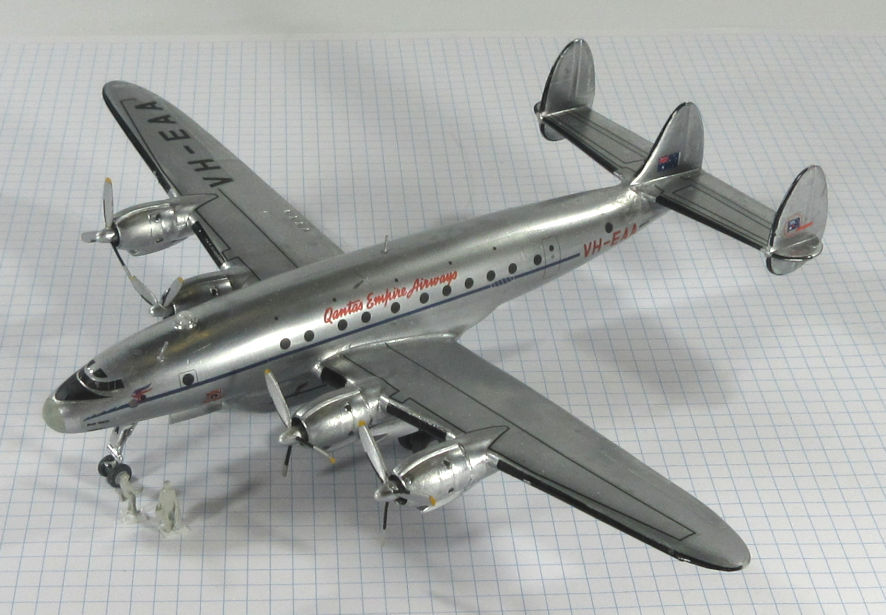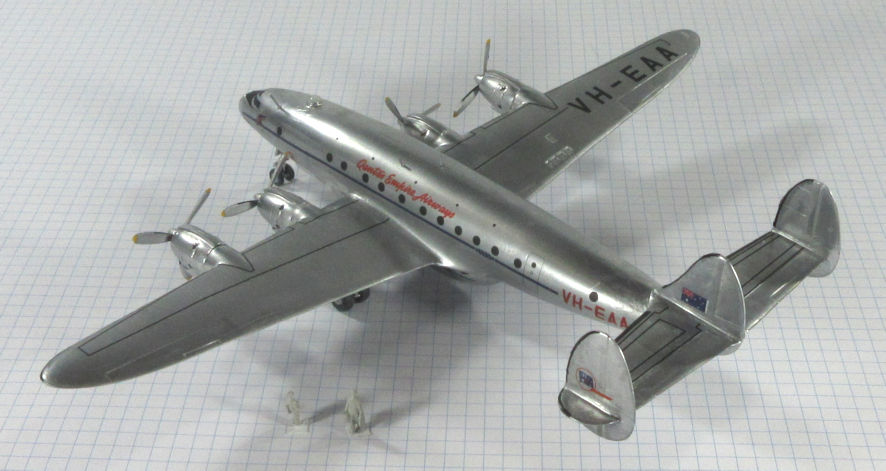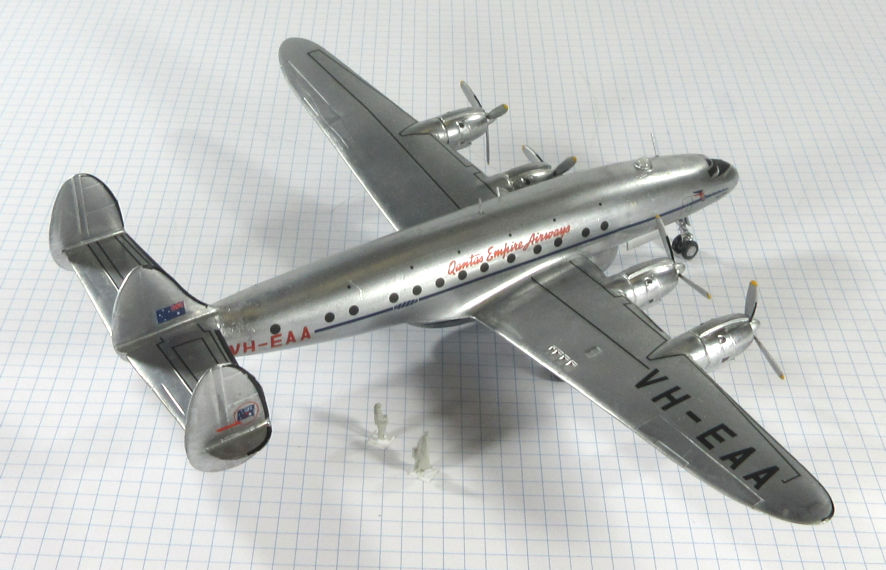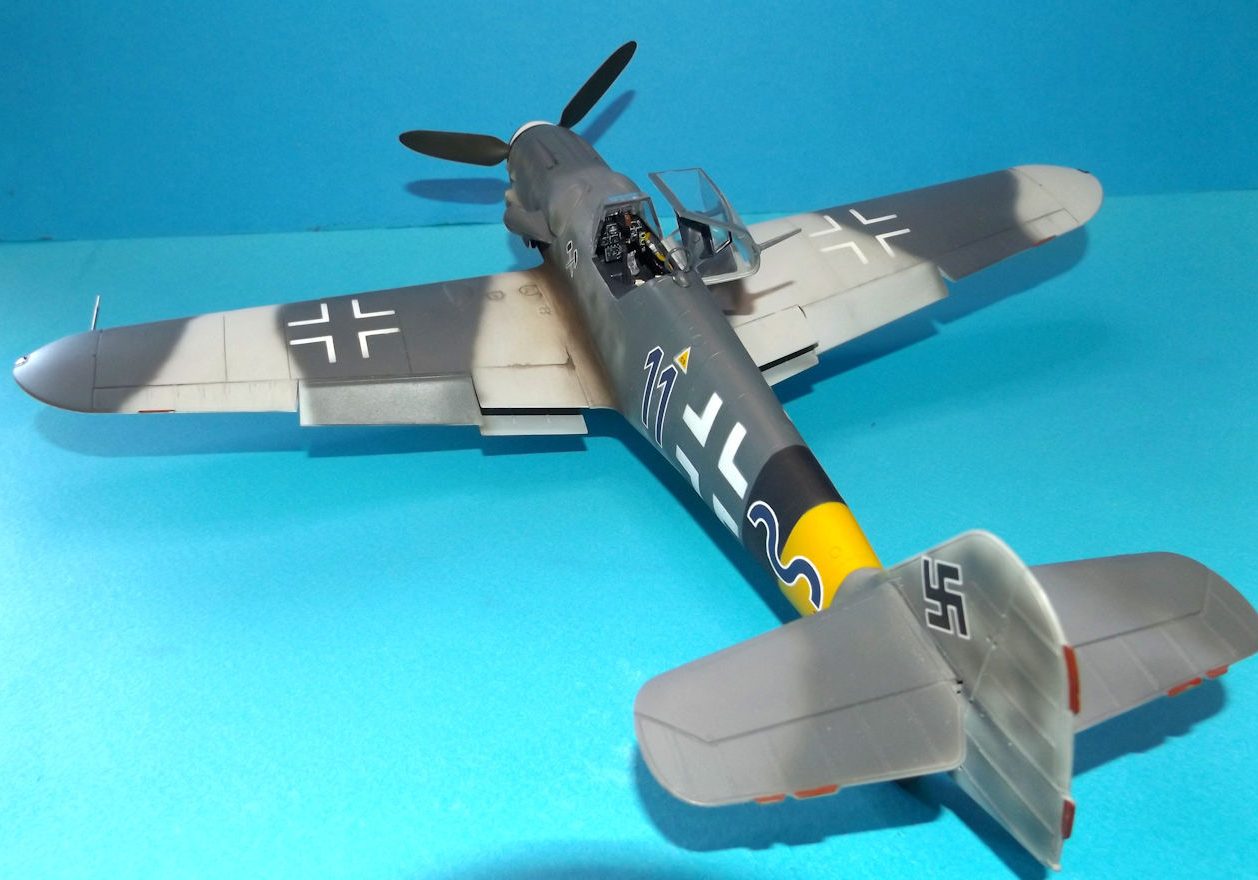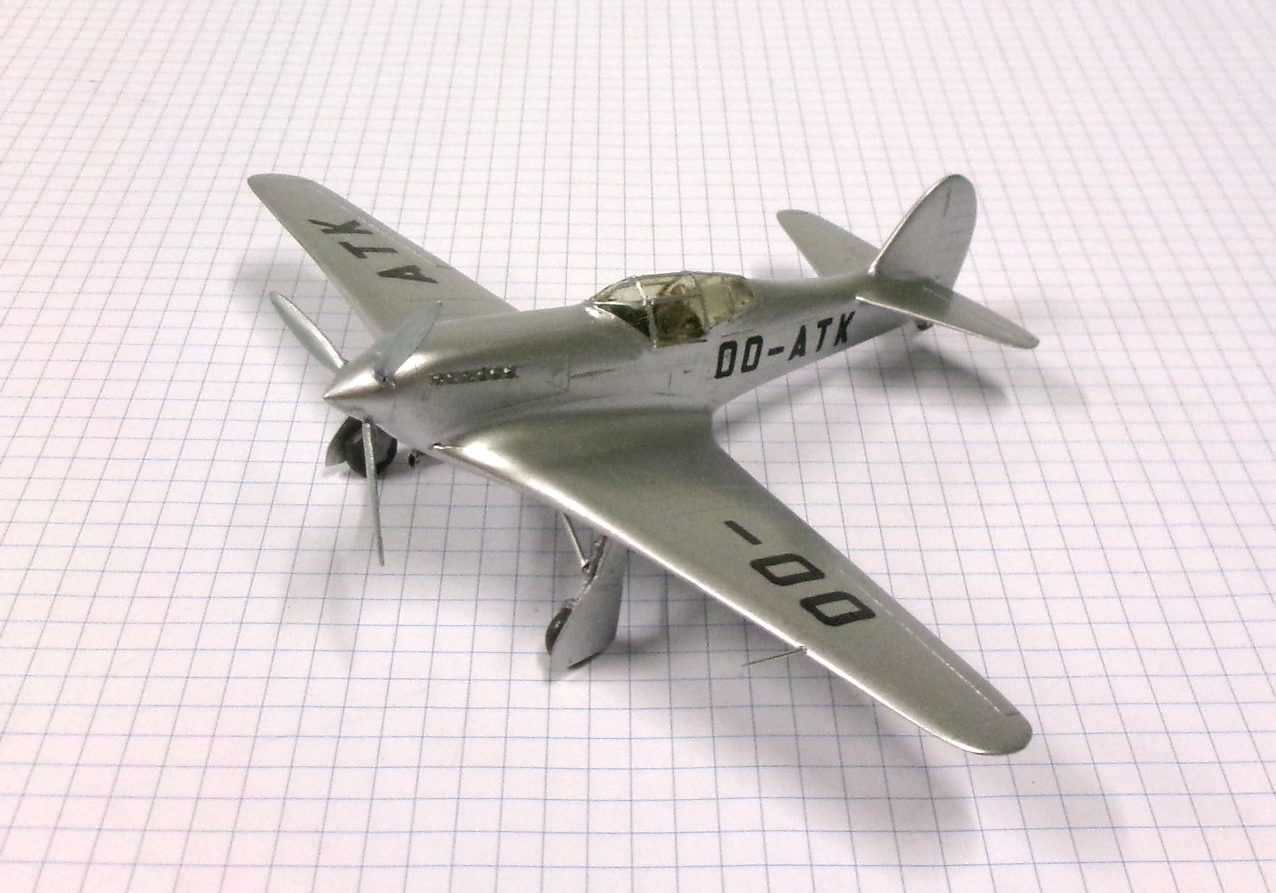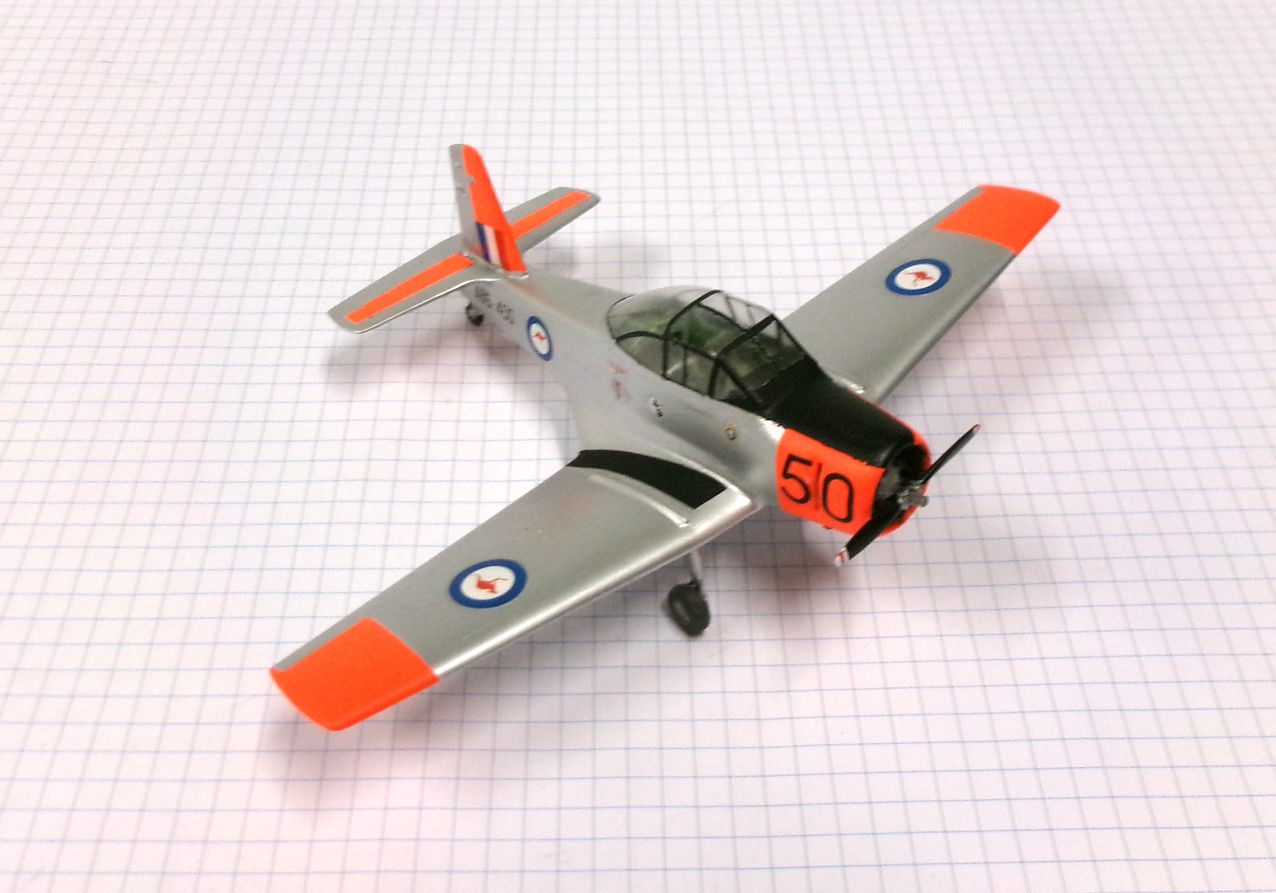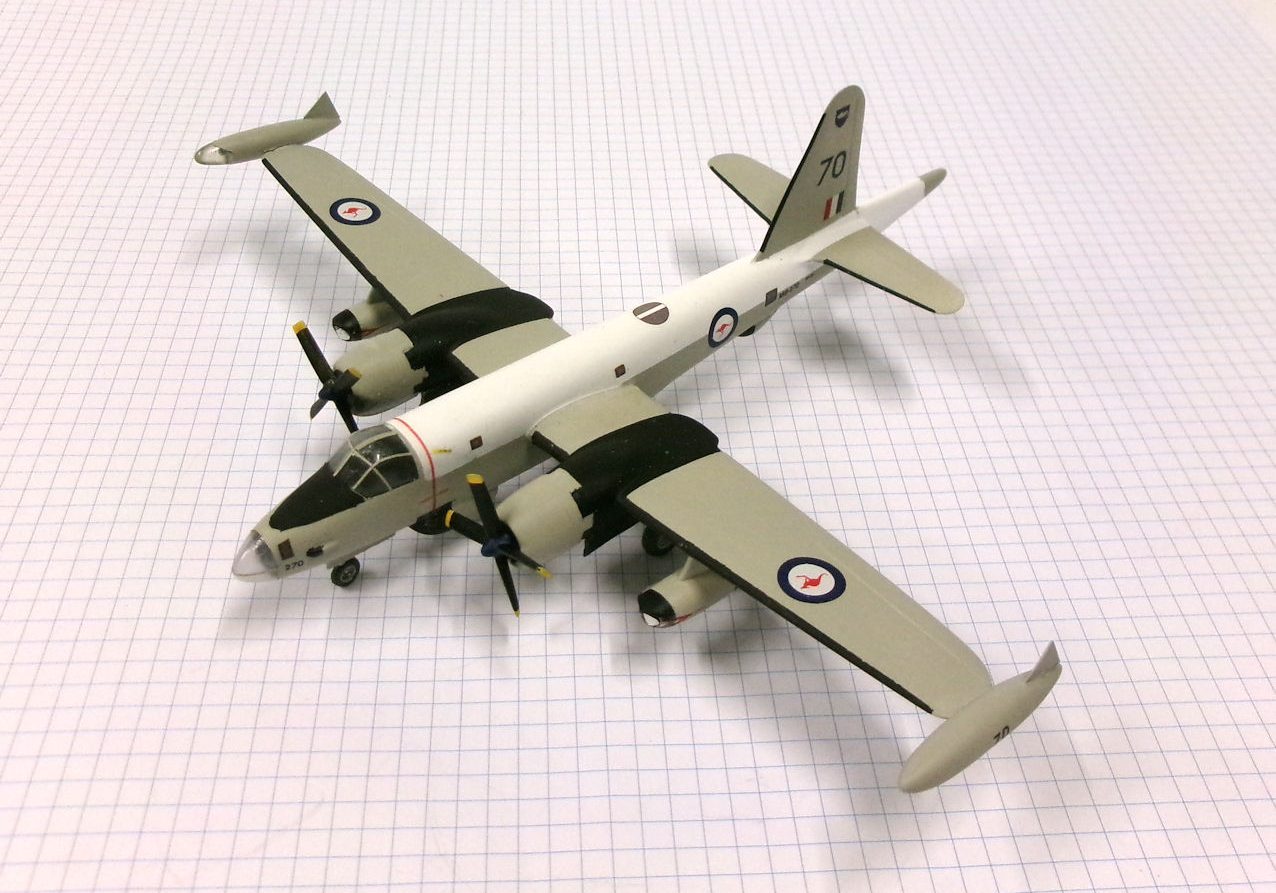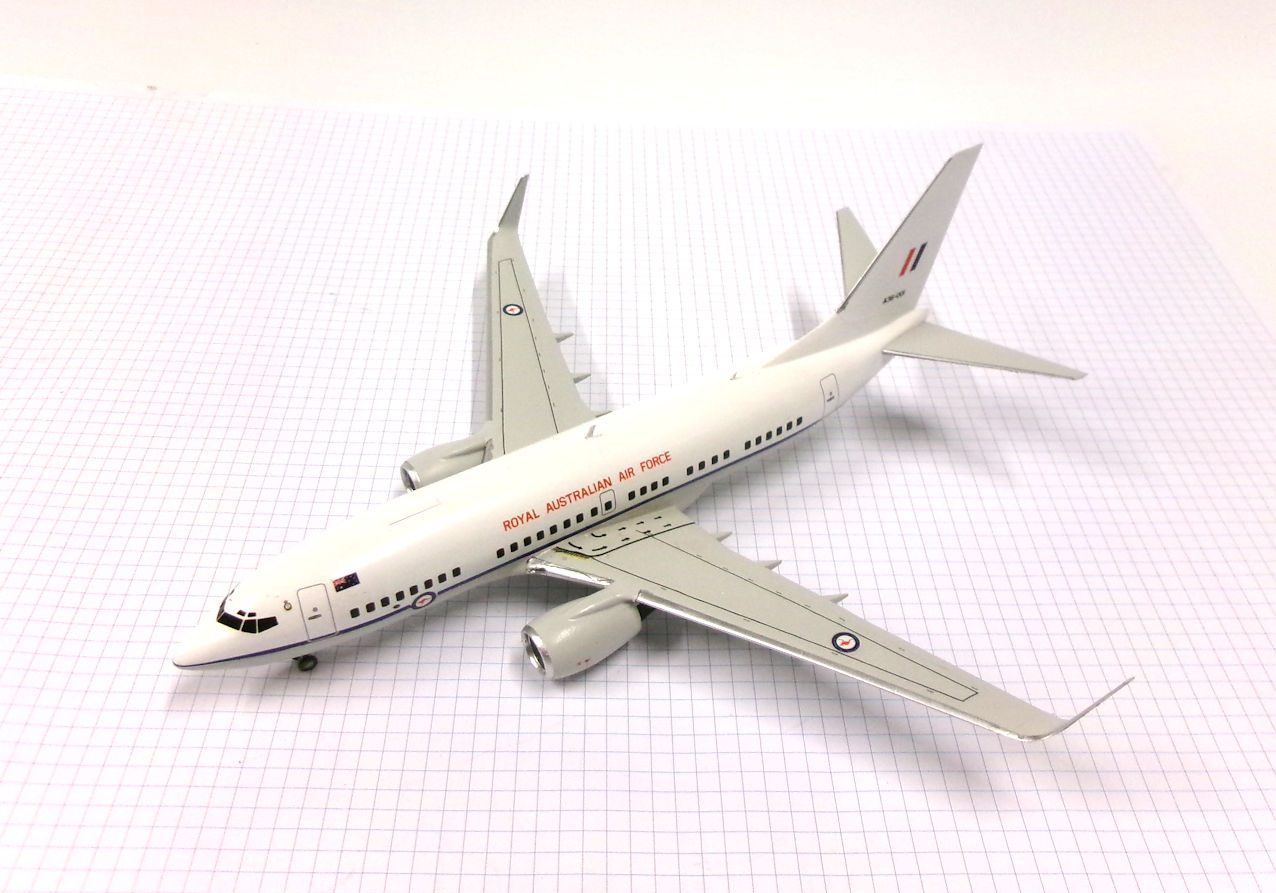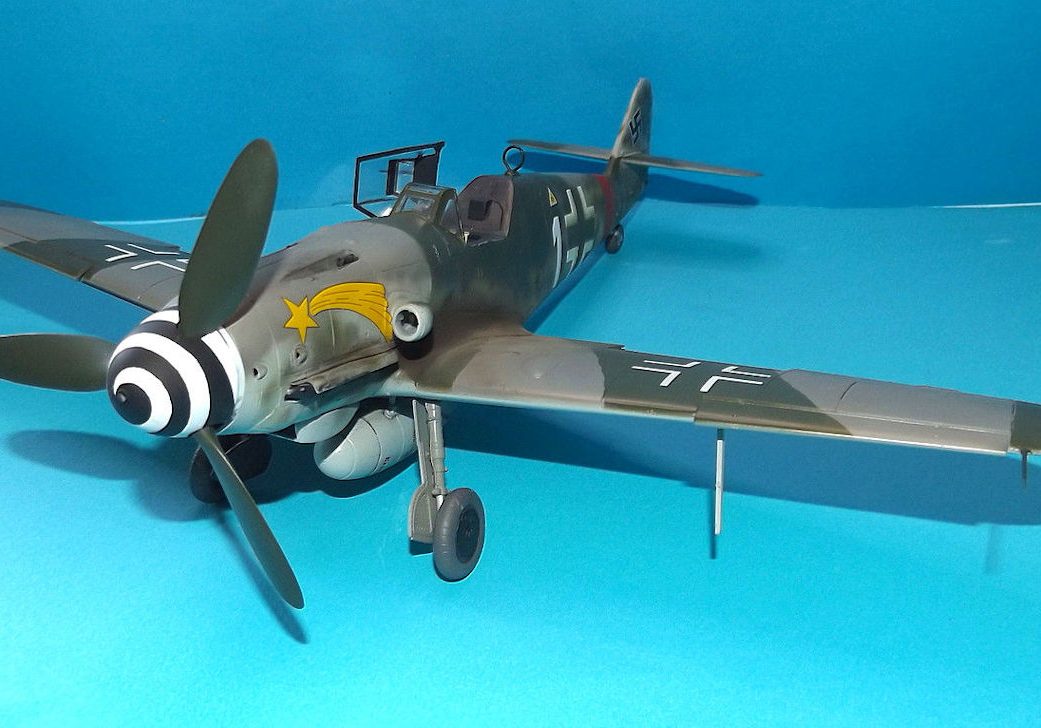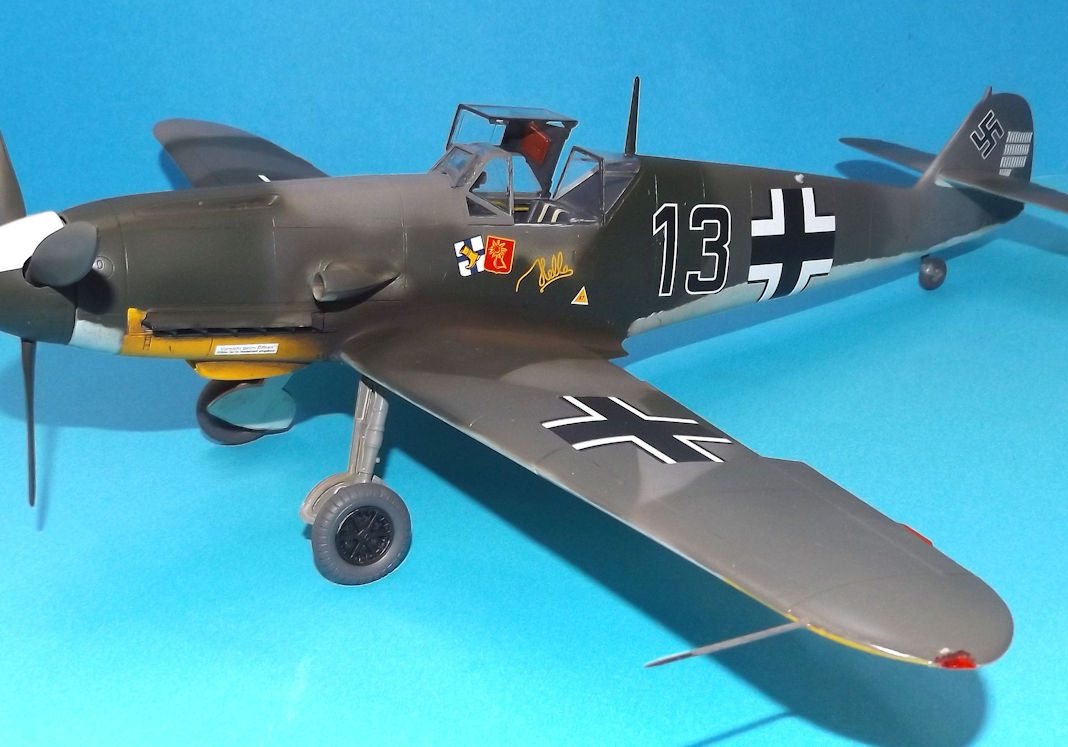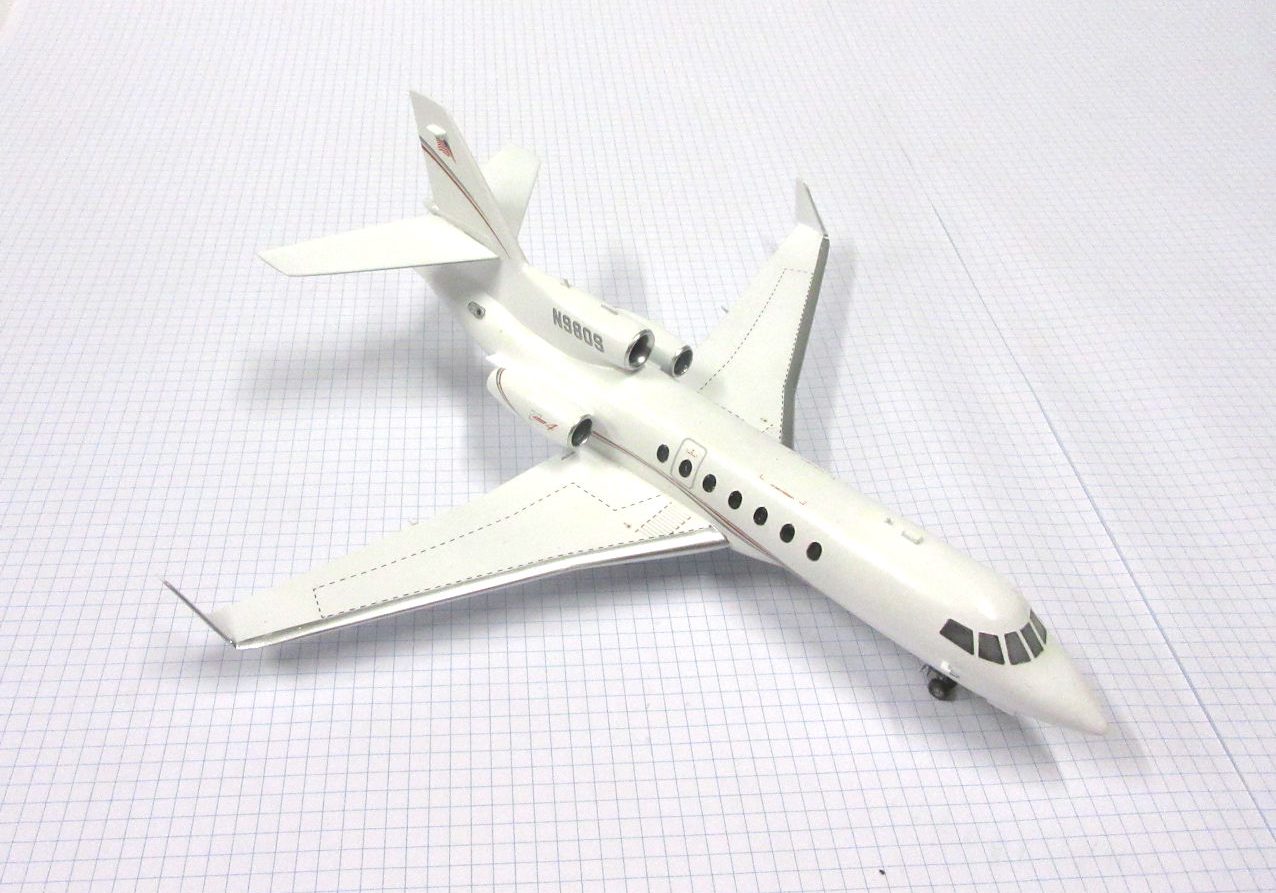History
The Lockheed Constellation entered airline service in 1947.
It was the first airliner able to fly across the Atlantic Ocean non-stop and was one of the airliners that began popularising long range passenger flight after World War II.
Development of the Lockheed Constellation began before World War II but the first version was the militarised C-69 that was mainly used as a high speed long range troop transport.
After the war the Constellation was redesigned for commercial service as the Lockheed 794.
It made its first flight on 14 March 1947 and first entered service with Air France on 18 April. It was the first airliner able to cross the Atlantic Ocean non-stop.
Sixty were manufactured and a further 59 of the 749A version with an increased maximum take off weight.
The Constellation was replaced in production by the Super Constellation in 1950.
This model represents VH-EAA flying with Qantas Empire Airways in October 1947.
Minicraft and Welsh Models 1/144 kits and Hawkeye decals completed by Leigh Edmonds on June 2012.

